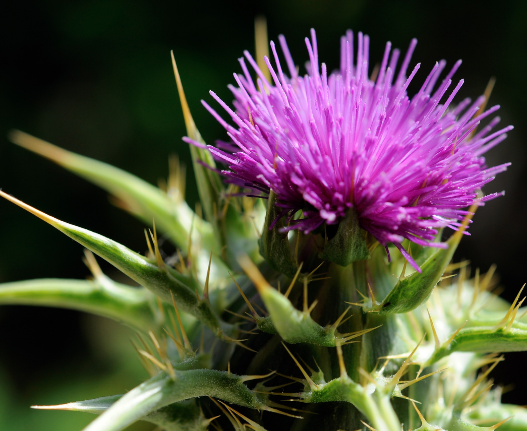Milk thistle (Silybum marianum, Carduus marianus) and its beneficial properties on liver functions have been known for several centuries. Also called wild artichoke, milk thistle belongs to the Asteraceae family. It is recognizable by its thorny pale green leaves marbled with white and its purple flowers.
Milk thistle owes its name to a legend. The Virgin Mary, traveling between Judea and Egypt to escape Herod, would have nursed the Baby Jesus in a thicket of thistles. A few drops of milk would have fallen on the leaves. They are believed to be the source of the white veins characteristic of the species.
Silymarin is considered as the active substance of the plant, responsible for stimulating and regenerative properties on the liver. Silymarin is actually a complex of substances, the most active of which is silybin. The highest concentration is found in the seeds or fruits of the plant.
After several trying months for the body and mind (cold, lack of light, excessively rich diet), spring is the perfect season to make a new start and begin a detox treatment. Through its effect on the liver, milk thistle, the “detox” organ par excellence, is the ally with the arrival of sunny days.
Consumption of milk thistle fruit or seed contributes to liver protection * and the detoxification potential of the liver *.
Available as a standardized extract of 80% silymarin and 30% silybin.
* authorized claims awaiting evaluation by the European Commission
